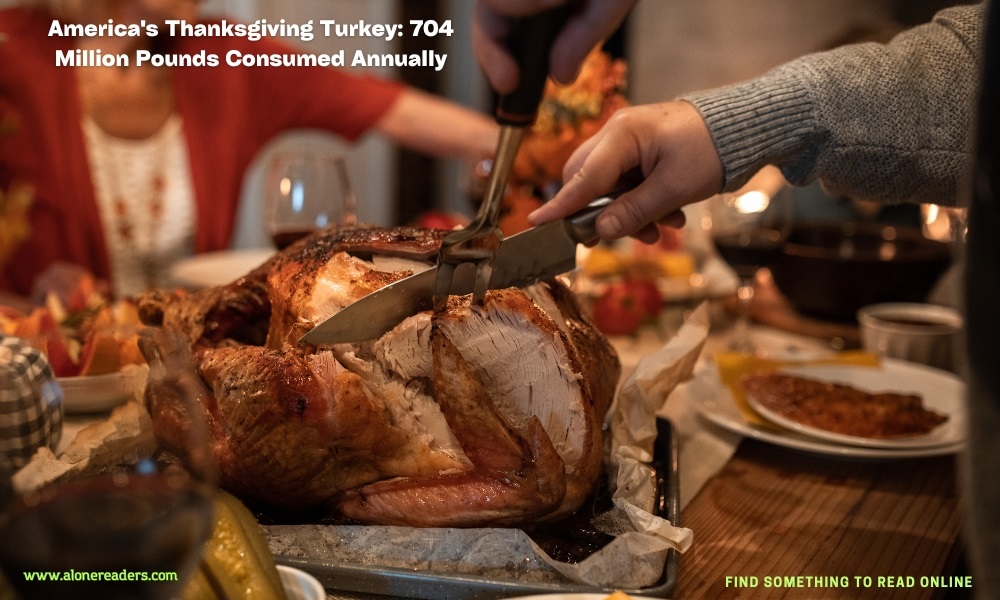
Every year, as November approaches, Americans gear up for one of their most cherished holidays, Thanksgiving. Central to this celebration is the turkey, a bird that has become synonymous with the holiday itself. Astonishingly, it is estimated that Americans consume around 704 million pounds of turkey each Thanksgiving, which equates to nearly 50 million turkeys. This staggering figure not only highlights the turkey's cultural significance but also underscores its massive impact on both the economy and the environment.
The tradition of eating turkey on Thanksgiving is deeply embedded in American history, tracing back to the early 17th century. Although there are various accounts of how turkey became the centerpiece of Thanksgiving, most agree that it was due to its abundant presence in North America and its size, which made it suitable for large family feasts. Over the centuries, this tradition has not only persisted but has grown exponentially.
The scale of turkey consumption today has significant economic implications. The turkey industry sees a substantial portion of its annual revenue around Thanksgiving. Farmers across the country prepare year-round to meet the surge in demand during this period, raising millions of turkeys in various farms. The process involves not just breeding and feeding, but also the transportation and processing of turkeys, all of which contribute to local and national economies.
From an environmental standpoint, the production of 704 million pounds of turkey each year raises concerns about sustainability. The resources required to raise this number of turkeys include vast amounts of feed, water, and land. Furthermore, the process generates significant amounts of waste and greenhouse gases, contributing to environmental degradation. Many advocates and organizations are now promoting more sustainable practices within the poultry industry, including better waste management systems and the reduction of carbon footprints.
On a cultural level, the preparation and consumption of turkey on Thanksgiving serve as a ritual that unites families and communities. It is a time for people to come together, share stories, and create memories, all centered around the dinner table. The meal typically involves not only turkey but also a variety of side dishes that have their own regional and familial significance, such as stuffing, cranberry sauce, and pumpkin pie.
However, it's also worth noting that the turkey-centric Thanksgiving meal is evolving. Changing demographics and increasing awareness of dietary preferences and health implications are influencing what appears on the Thanksgiving table. Many Americans are now incorporating vegetarian and vegan options, reflecting broader trends towards plant-based eating. Despite these changes, turkey remains the centerpiece for the majority of Thanksgiving dinners.
Another aspect of this tradition is the charitable spirit associated with Thanksgiving, which involves numerous turkey donations to help those in need enjoy a festive meal. This generosity highlights a broader societal commitment to ensuring that the joy of Thanksgiving can be shared by all, regardless of economic circumstances.
The logistics of getting 50 million turkeys from farm to table are complex and require meticulous planning and coordination across various sectors. The transportation sector, in particular, plays a critical role in ensuring that turkeys arrive at grocery stores and homes across the country in time for the holiday. This involves cold storage facilities, fleets of refrigerated trucks, and sometimes even air transport for delivering fresh turkeys to distant locations.
Despite the joy and celebration associated with turkey consumption on Thanksgiving, it is also a time for reflection on the impacts of such large-scale meat consumption. Discussions around the dinner table are increasingly turning towards sustainable practices and the ethical aspects of eating meat, reflecting a society that is ever more conscious of its food choices.
In conclusion, the consumption of 704 million pounds of turkey each Thanksgiving illustrates a remarkable feature of American culture that involves more than just eating. It encompasses economic activities, environmental concerns, cultural rituals, and changing societal values. As America continues to celebrate this age-old tradition, it also adapts to new understandings and practices that could shape future Thanksgivings. This evolution reflects the dynamic nature of cultural traditions, making Thanksgiving not only a time for feasting but also for thinking and giving.